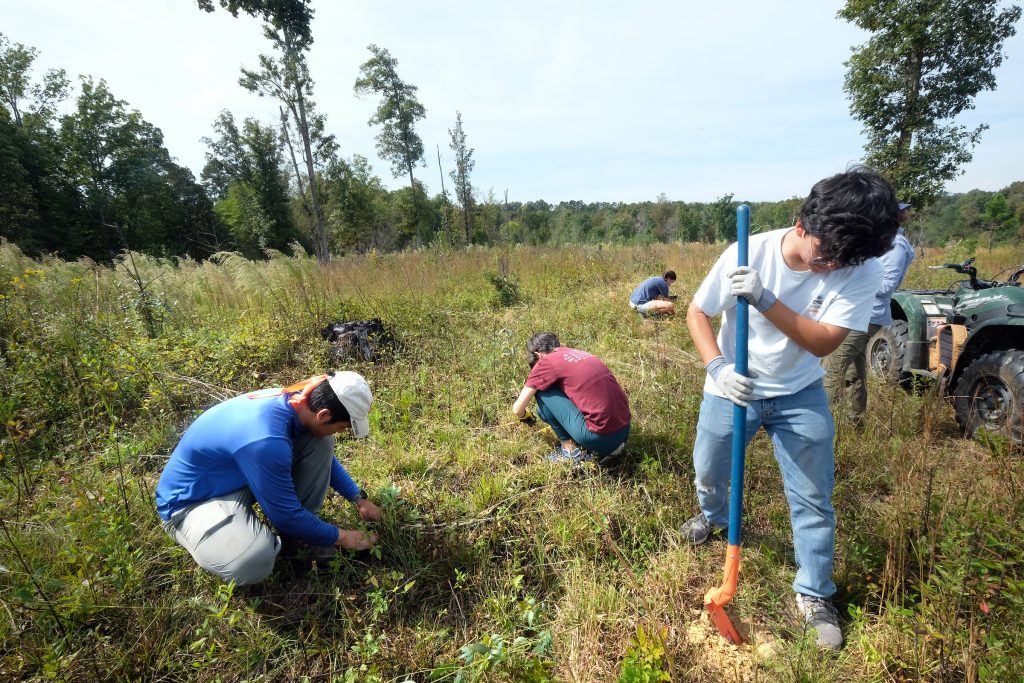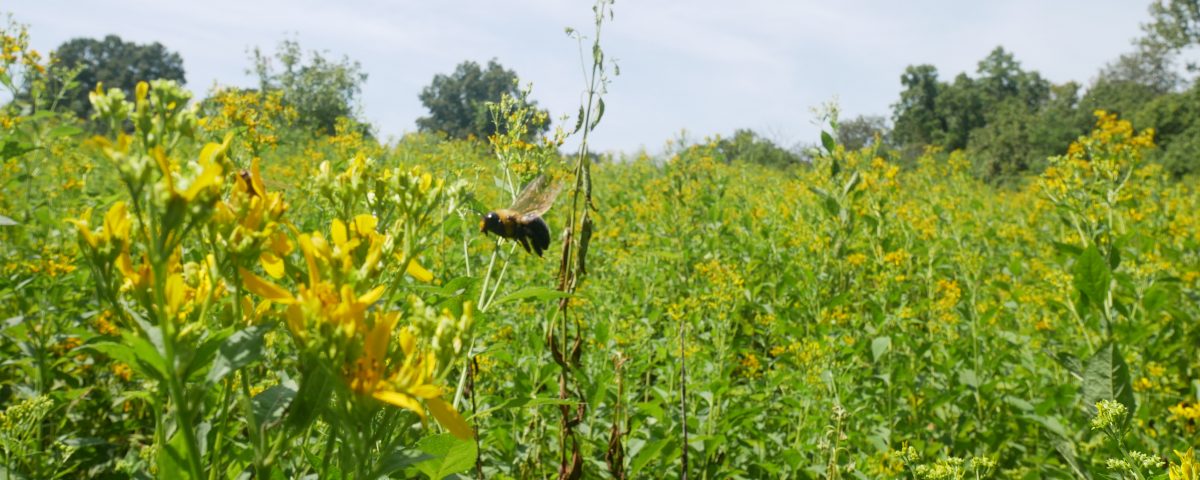
2021 Year In Review
December 29, 2021
Invest in Conservation for North Carolina’s Future
May 23, 2022Project establishes first protected site in Cabarrus County for endangered sunflower
Charlotte, N.C. – Native grasslands that once thrived across the Piedmont are making a comeback thanks to an ambitious habitat restoration initiative led by Catawba Lands Conservancy. Through its Catawba Grasslands Project, the Conservancy is restoring and managing grasslands across nine protected properties in partnership with the NC Botanical Garden, the US Fish and Wildlife Services’ (USFWS) Partners for Fish and Wildlife Program, the Friends of Plant Conservation, the NC Plant Conservation Program and Mecklenburg County Parks and Recreation. Duke Energy has also provided grant funding and support to the initiative.
Grasslands, habitats with few trees and an abundance of grasses and wildflowers, were once prevalent across North Carolina, but have nearly disappeared in the Piedmont due to development and suppression of fire. Many of the native plant and animal species that thrived in these habitats are now threatened, such as Georgia aster, bobwhite quail, monarch butterfly and the endangered Schweinitz’s sunflower.
“We’re pleased to support projects that protect and expand access to North Carolina’s natural treasures, especially as more people are engaged in outdoor activities,” said Stephen De May, Duke Energy’s North Carolina president. “Our company is committed to the environment of our great state.”
At Buffalo Creek Preserve in Cabarrus County, the Conservancy restored 35 acres of grasslands with prescribed fire. Because of these efforts, a previously unknown population of the threatened Carolina Birdfoot-trefoil emerged here in 2020. Additionally, this preserve became home to the first protected site in Cabarrus County for the Schweinitz’s sunflower. In October of 2021, staff and volunteers planted 800 Schweinitz’s sunflower seedlings that were propagated from seeds collected from an adjacent property. The public can experience this grassland by visting the 2.1-mile long Buffalo Creek Preserve Trail.
“For many years since Schweinitz’s sunflower was listed in 1994, one of our goals was to have at least one managed population on a protected site in Cabarrus County within its historical range. This project made that happen by collecting seed from nearby plants that did not have a permanent home. Today, thanks to the Catawba Lands Conservancy, they made our shared goal a reality by organizing habitat restoration on the ground with support from our office and state partners,” said Laura Fogo, a biologist with the Asheville ES Field Office, USFWS.
In 2022, the Conservancy plans to reintroduce prescribed fire at three additional Preserves as part of this effort to restore and manage grasslands across the region.
In Gaston County, the habitats under some powerlines are also becoming thriving ecosystems for pollinators, birds and small mammals as part of the grasslands work. The Conservancy has had great success at two of its protected properties working with Duke Energy to change management of powerline easements by replacing fescue grass with native warm season grasses and wildflowers. The Conservancy’s vision is to expand the utility rights-of-way initiative into Mecklenburg County by working with Duke Energy and the County to develop a corridor of pollinator habitat that would connect three County nature preserves and two Conservancy properties.
###
If you want to support the Conservancy’s efforts to restore native grasslands consider making a donation during our summer fundraising campaign! Our Board of Directors is generously matching donations up to $50,000 from now through September 15, so your gift will go twice as far for our native plants and wildlife.

Volunteers and staff planning Schweinitz’s sunflower at Buffalo Creek Preserve in Cabarrus County, NC. Photo: Nancy Pierce

